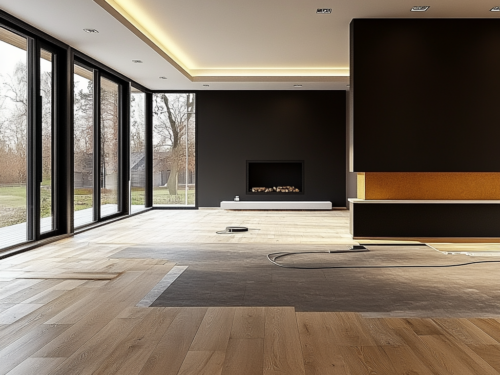
The Difference Between Prefinished and Unfinished Wood Flooring
Choosing between prefinished and unfinished wood flooring is an important decision when installing or replacing hardwood floors. Both options have their unique benefits and drawbacks, and understanding these differences will help you make the best choice for your home.
What Is Prefinished Wood Flooring?
Prefinished wood flooring comes from the factory with a protective finish already applied. Here are its main characteristics:
- Factory Finish: The boards are sanded, stained, and sealed before they’re shipped to you.
- Ease of Installation: Prefinished boards are ready to install immediately, making them ideal for faster projects.
- Consistent Appearance: The finish is uniform, offering a smooth and polished look.
- Durability: Factory finishes are often more durable than those applied on-site due to advanced curing methods.
If you’re looking for convenience, prefinished flooring may be the right choice. Learn more about plank options, like wide vs. narrow, here.
What Is Unfinished Wood Flooring?
Unfinished wood flooring, as the name suggests, is raw wood that requires finishing after installation. Here are its main traits:
- Customizable Finish: You can choose your preferred stain and finish to match your home’s design.
- On-Site Finishing: Sanding, staining, and sealing are done after installation, creating a seamless appearance.
- Time-Intensive: The finishing process can take several days and often involves additional cleanup.
- Higher Initial Effort: Professional installation is usually recommended to ensure a flawless result.
Unfinished flooring is ideal for those looking for a personalized and cohesive look throughout their space. Learn about matching new and existing hardwood floors here.
Key Differences Between Prefinished and Unfinished Wood Flooring
Here’s a quick comparison to help you decide:
| Feature | Prefinished | Unfinished |
| Installation Time | Faster, as no finishing is needed | Longer, due to on-site finishing |
| Appearance | Uniform, factory-applied finish | Seamless and customizable finish |
| Durability | Highly durable, UV-cured finishes | Dependent on the finish applied |
| Cost | Higher upfront cost, but fewer labor expenses | Lower material cost, but higher labor expenses |
| Maintenance | Easier to maintain | May require more upkeep initially |
Understanding these differences is crucial for making an informed choice. For additional details on finishes, check out this guide on oil-based vs. water-based finishes here.
Benefits of Prefinished Wood Flooring
- Quick Installation: Perfect for projects with tight timelines.
- Less Mess: No sanding or sealing means less dust and fewer odors.
- Wider Selection: Available in a variety of colors and styles.
- Longer-Lasting Finish: Factory finishes are often more resistant to wear and tear.
Benefits of Unfinished Wood Flooring
- Custom Staining: Match your floor color exactly to your home’s interior.
- Seamless Look: Sanding after installation ensures no visible gaps between planks.
- Better for Large Projects: Ideal for creating a uniform look across multiple rooms.
- Repairs: Easier to fix scratches or damage with on-site refinishing.
Which One Should You Choose?
Your decision depends on your priorities:
- Go with Prefinished if:
- You want a quick, hassle-free installation.
- You prefer a factory-applied, long-lasting finish.
- Choose Unfinished if:
- You want a custom look tailored to your home.
- You’re willing to invest more time for a seamless appearance.
For more insights into hardwood flooring, explore this guide on sunlight’s effect on wood floors here.


